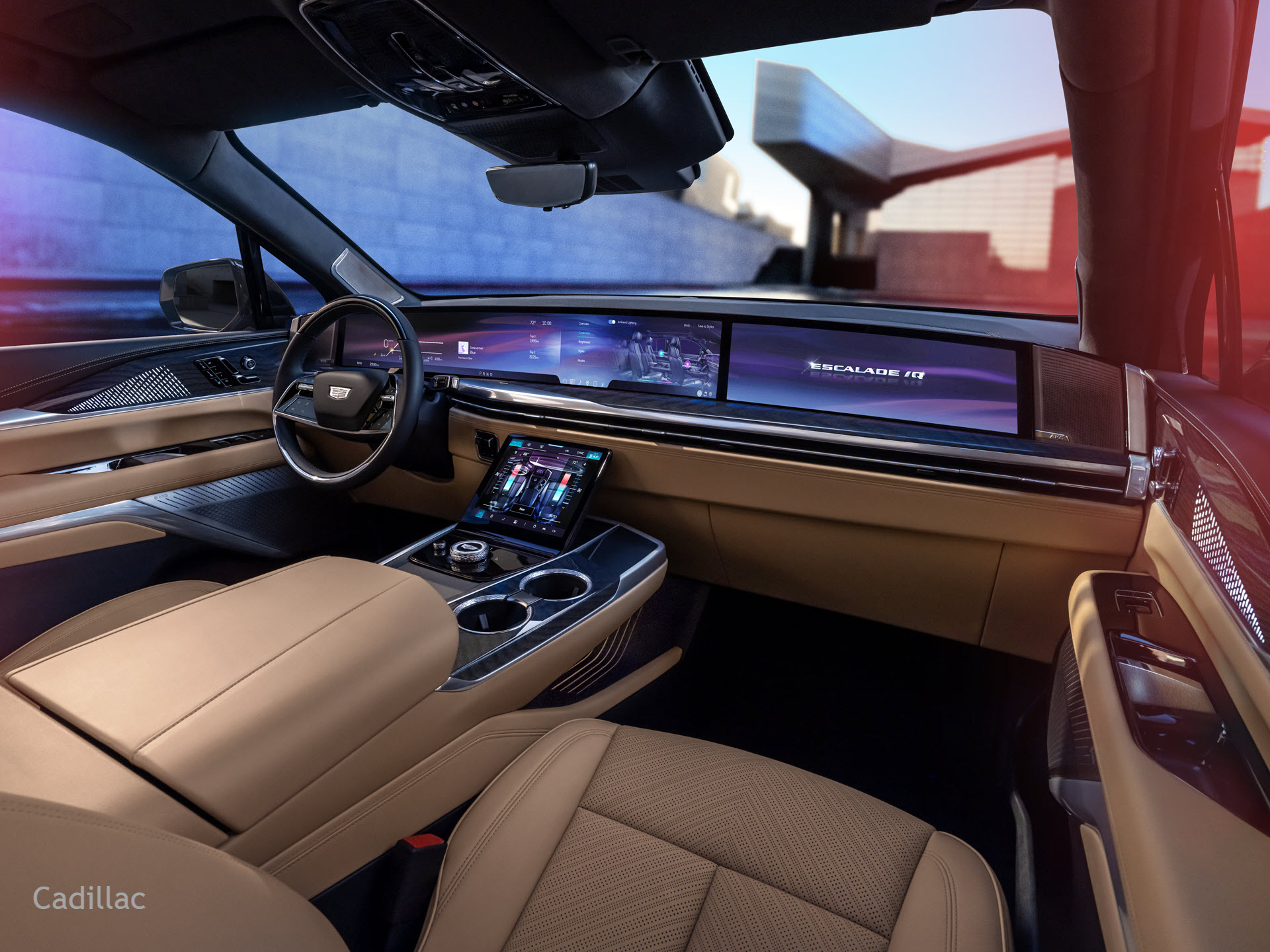The 2025 Cadillac Escalade IQ is an innovative electric SUV that will combine top-tier luxury with cutting-edge technology. GM relies on Altia for getting its most advanced, intuitive graphics into production – and this cutting-edge redesign of Cadillac’s flagship turned EV will definitely deliver.
Here’s what we’re most excited about in the Escalade IQ.
The cockpit interface is incredibly user-friendly, with intuitive menus and rapid responses. Multi-tasking is a breeze, allowing drivers to simultaneously view navigation, play music and monitor vehicle stats without switching screens. Voice recognition, augmented reality navigation and integration with popular apps ensure that drivers are safe, comfortable and connected.
The dash is composed of a sprawling, curved pillar-to-pillar 55″ total diagonal LED display powered by a Snapdragon Cockpit platform from Qualcomm Technologies. Spanning the entire front row, it provides a stunning visual experience for driver and passenger. This massive display is segmented to serve the different needs of front seat passengers—with 35″ dedicated to the driver and 20″ dedicated to the passenger. The passenger side of the display is polarized—making it less visible to the driver thus reducing distraction and clearing the regulatory hurdle that will let passengers stream video or surf the internet while the electric Escalade is on the move. The display can be customized with different themes, widgets and apps, including voice-controlled services like Google Assistant, Google Maps and Google Play.
Beneath the 55″ screen combination sits an 11″ touchscreen where driver and passenger can access five-zone climate controls, ambient lighting and even the doors (if equipped with the power open-and-close feature).
That cool, connected experience of the Cadillac Escalade IQ extends to the back seat. For models with the Executive Seating package, second-row passengers get two 12.6″ personal screens plus a rear command center screen to control comfort, lighting and more.
Designing, developing and deploying this kind of brand-defining innovation in cockpit displays is exactly what Altia does. We work with automotive OEMs and Tier 1s all over the world—including General Motors—to deliver first class cockpit experiences for production vehicles. Let us help you with your next generation production program. Visit www.altia.com/get-started today.


